
Every Saturday, Danta Beach looks unusual. About 15 boys and girls with their heads covered in yellow and red caps jump and run on the sand and throw themselves into the water without fear again and again.
“What is a danger that you see at this moment?”, coach Ernst Van Der Poll asks them when he has them sit together facing the sea.
They all look around curiously, searching for what he is referring to. Some believe it is the tide, others the wind. Until later, one of them gets it right: “the unicorn that’s over there,” and points to an inflatable unicorn a few meters away.
Van Der Poll explains to them that, because of the material, that inflatable can move very quickly through the sea and that this is a risk for people who are using it.
In a country like Costa Rica, where drowning is the second cause of accidental death, these drops of knowledge begin to form future lifeguards.
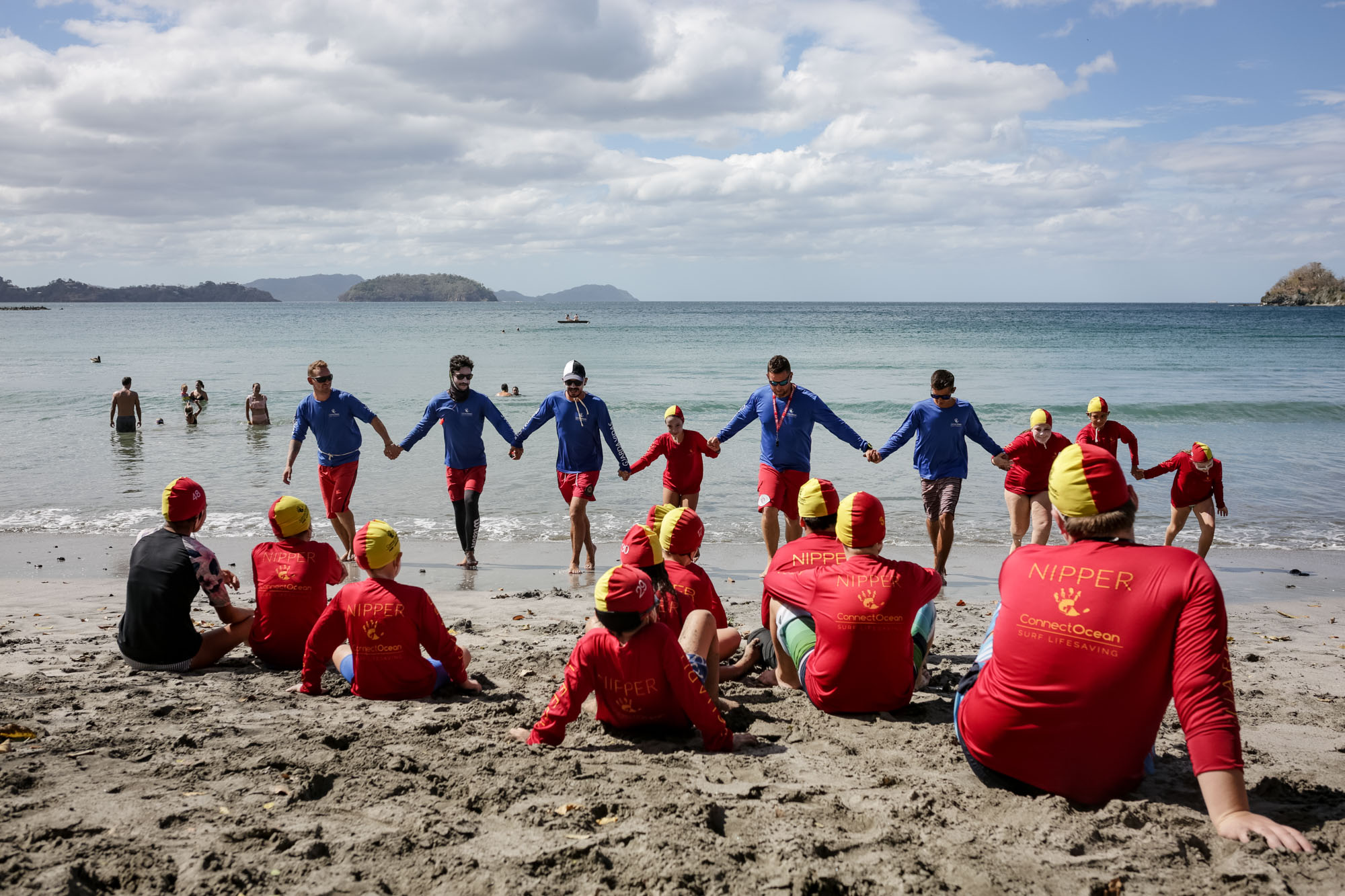
Lifeguards hold hands with some children to explain the sea currents. Photo: César Arroyo Castro
What is taking place this January morning is the first class of the Nippers Lifeguard training program held by the non-profit organization Swim Safe, in which children between eight and 12 years old learn to swim, to recognize risky situations such as sea currents, and even lifeguarding techniques and cardiopulmonary resuscitation (CPR).
Professional lifeguards teach them these techniques every Saturday, by means of games, theory and rescue techniques. It is a methodology used in countries such as Australia, New Zealand and South Africa, which Ernst Van Der Poll brought to Costa Rica four years ago. So far, Swim Safe has trained about 600 minors.
It is a water safety and drowning prevention program,” Van Der Poll explains to the group. “But it is important that you know that this is not going to certify you as lifeguards,” he tells the students immediately. They aren’t allowed to get certified yet at their ages.
“Everything we learn in lifeguarding is for our own safety,” says 12-year-old Sofia Idarraga. “If someone is in trouble, we can help them but we are not yet certified,” she says before starting the day’s training.
Van Der Poll speaks English. Some of them understand him because they are foreigners or because they attend bilingual schools, but likewise lifeguard Ariel Lafuente translates each sentence into Spanish.
The organization charges $240 for the 12-week program. And for each child who pays for the classes, they give the course for free to other children in the community, especially those who attend organizations in the province that work with at-risk families such as Abriendo Mentes (Opening Minds), Futuro Brillante (Bright Future) and CEPIA.
Every Saturday they are getting to know each other. Those who speak English learn to speak Spanish, and those who speak Spanish begin to learn English. It is a cultural exchange,” Lafuente tells us.
An article published in 2015 by the Natural Hazards research center in Colorado, United States, counted drowning deaths in Costa Rica between 2001 and 2012 and concluded that children and adolescents between 10 and 19 are the second group most prone to drowning.
That’s why, beyond getting along together in Swim Safe classes, the girls and boys learning from an early age about water safety can have an impact on reducing drowning.
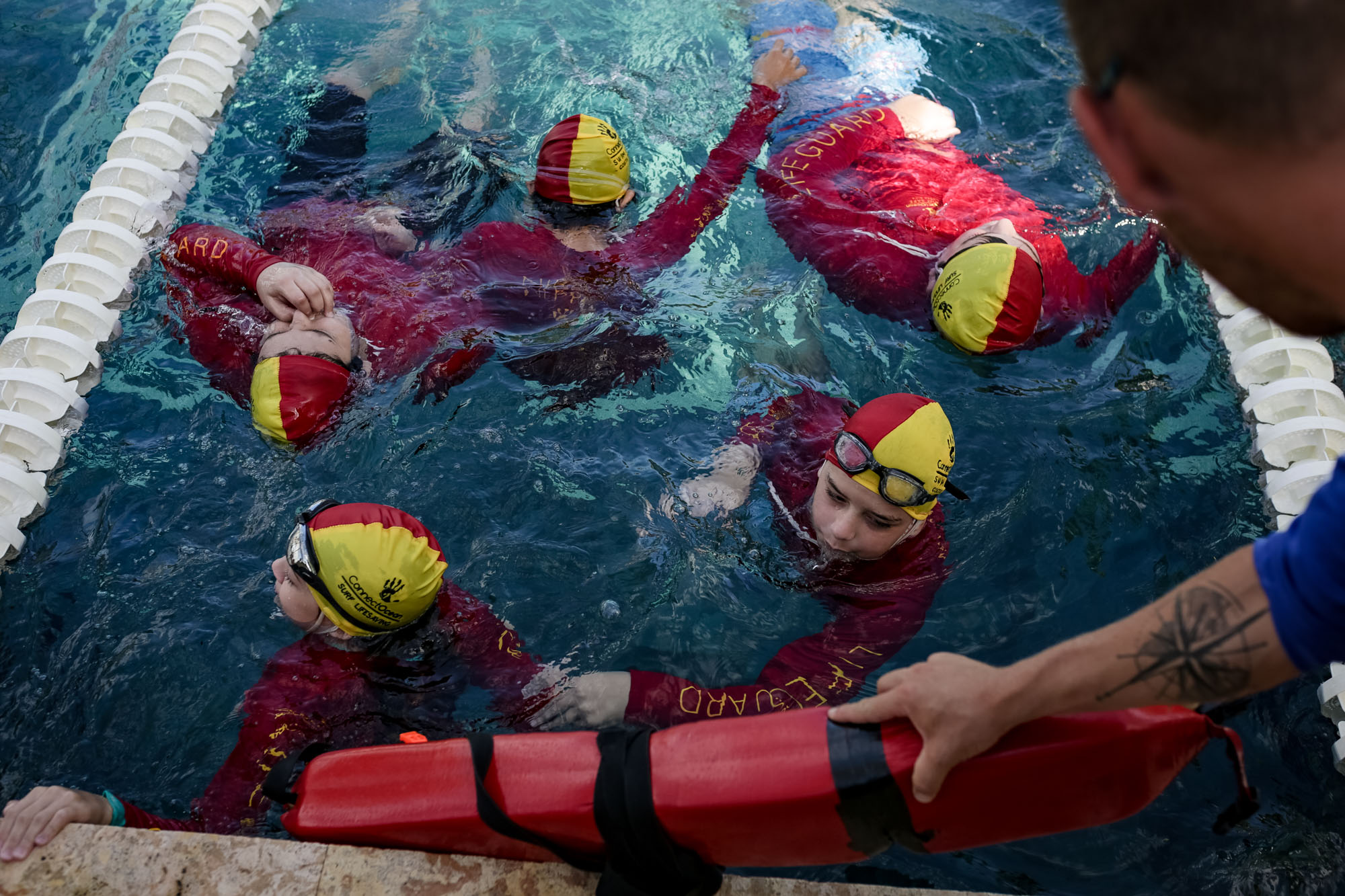
Training usually begins in the pool, where the kids practice swimming techniques. Photo: César Arroyo Castro
In Bangladesh, where drowning is the second leading cause of death for children under 17 years of age, a similar swimming program coincided with the reduction of deaths from drowning in children between five and nine years old.
This was reported in an article published by The Atlantic, which cites a study conducted by the Center for Injury Prevention and Research in Bangladesh. The scientific publication also concludes that when a child five years or older learns to swim, the probabilities of dying from drowning are reduced by 96%.
Reversing the Numbers
In the country, between 2001 and 2018, 890 people died from drowning, according to the most recent data provided by the International Ocean Institute (IOI) of the National University (UNA).
Sixty-two percent are nationals and 38% foreigners. This percentage of foreigners is very high,” specified Laura Segura, IOI director, to The Voice of Guanacaste.
For Swim Safe, it is impossible to measure a quantitative impact on the reduction of drowning statistics in the country, but they are sure that they are contributing to creating a culture of water safety in hundreds of families through their courses.
To begin with, they are creating a cell phone application for trainees to record experiences of how they implement lessons from the courses in their day to day life.
Cristopher Rodriguez, a 12-year-old from Liberia, related, “All my relatives learned to swim in the river, but more than once they have been in danger because they never went to a swimming class.”
Like many of his classmates, he has taken the course several times. This is his third time. “This is more professional,” he noted.
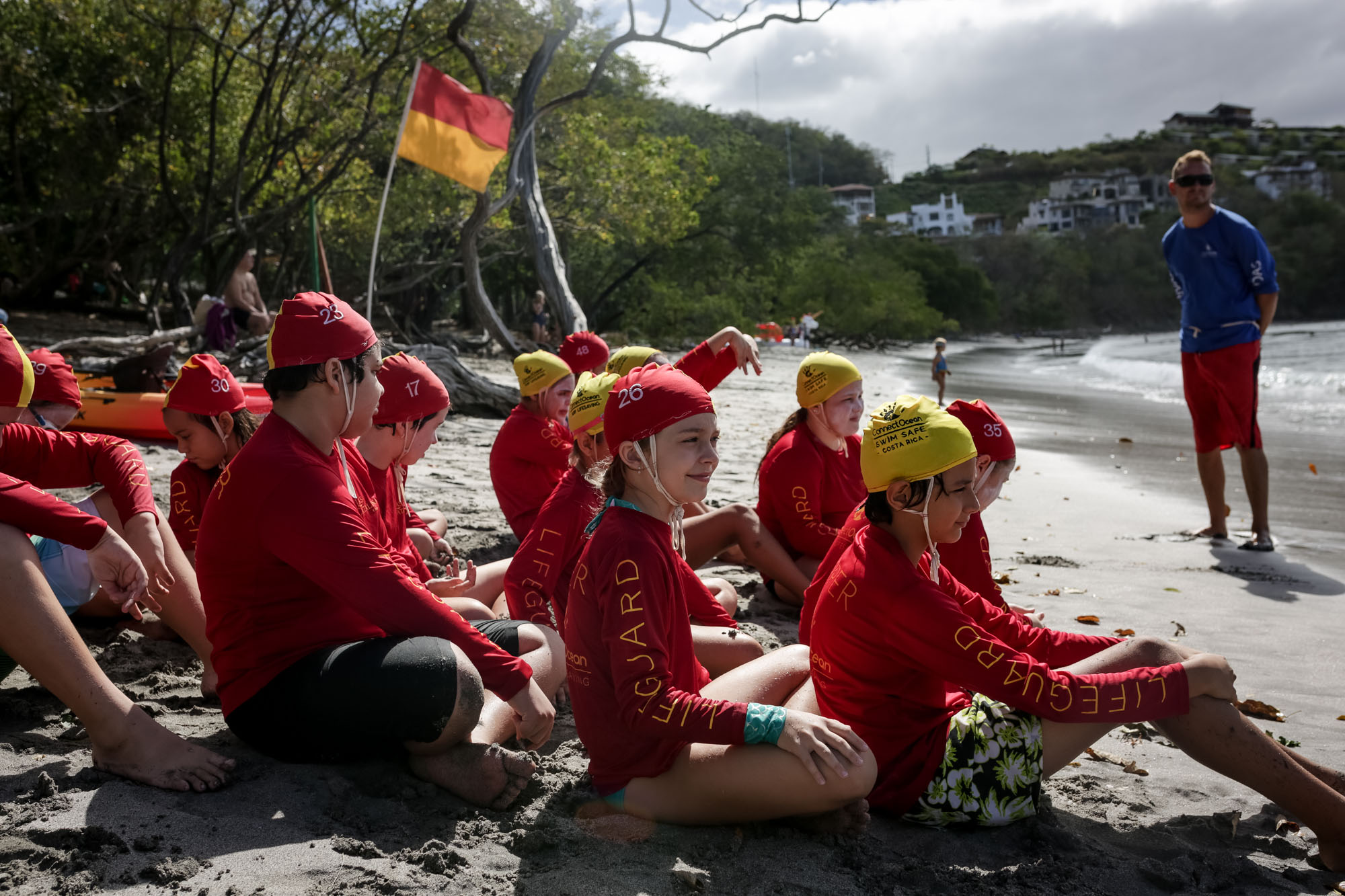
Kids sit on the beach to observe the behavior of the sea and to learn aquatic safety. Photo: César Arroyo Castro
Ariel Lafuente, one of the instructors, says that one time, an eight-year-old boy helped him rescue a competitor from open water. “A jellyfish stung the competitor. While I was calling the jet and the Red Cross, he threw the rescue tube to save him and pulled him to the kayak,” he recalls.
Many beach users (tourists and locals) do not pay attention to the warning signs, and without lifeguards present, they can get into trouble quickly,” researchers cite in the Natural Hazards article.
To change these two realities, Swim Safe is also leading the formation of a Costa Rican Lifeguard Federation, in which they can standardize a national lifeguard curriculum (which currently does not exist), and is insisting that the government invest in water education.
“Warning signs about currents on the beaches are not enough,” says Van Der Poll. “Educating in aquatic safety is the key.”


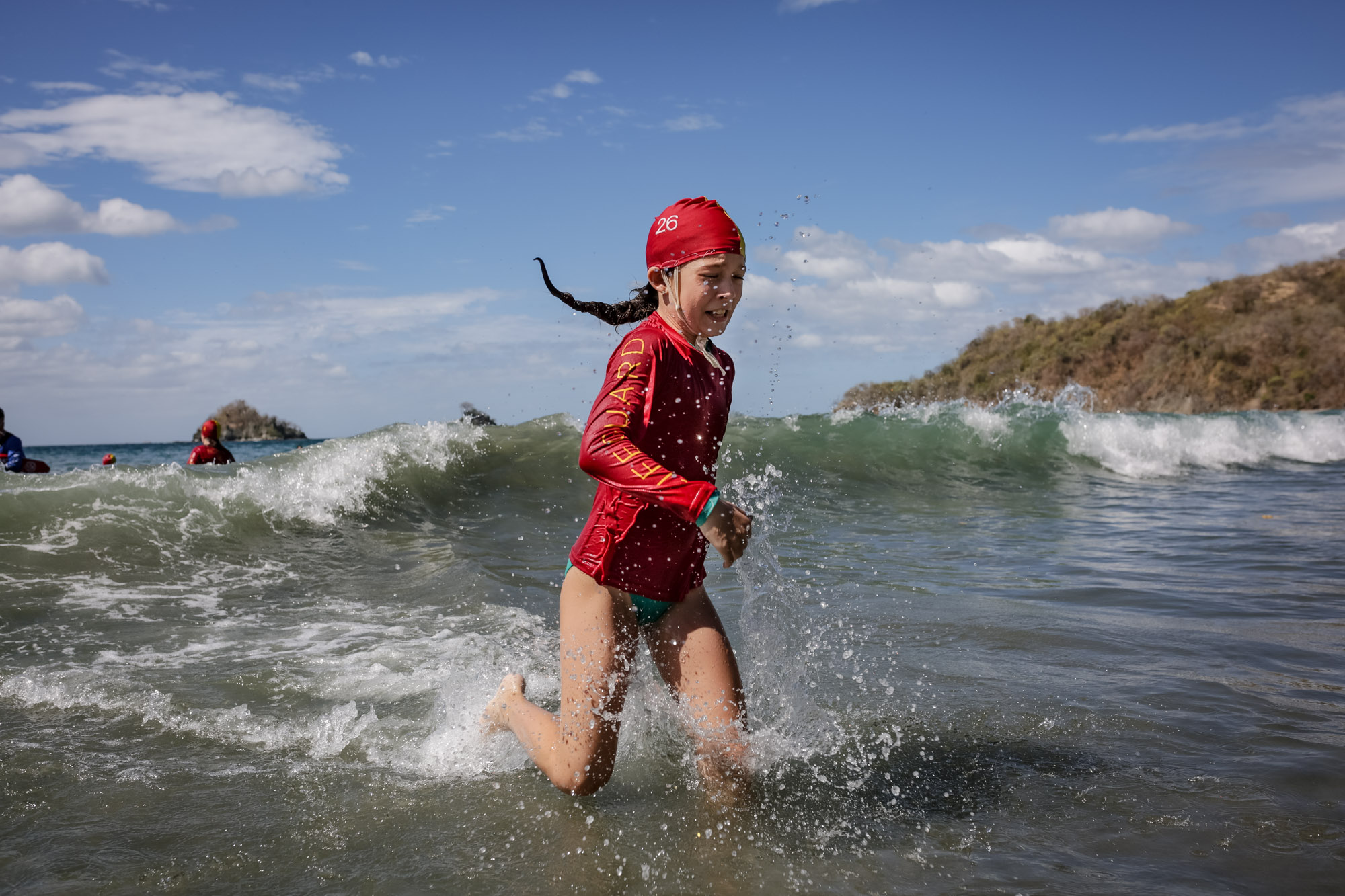
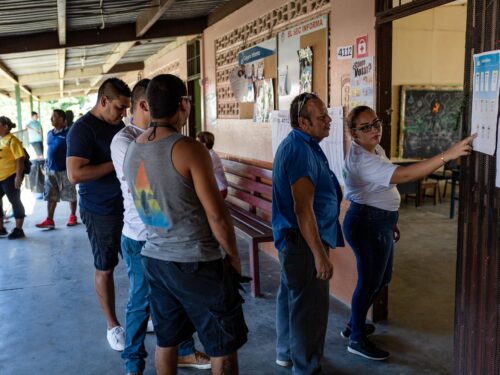
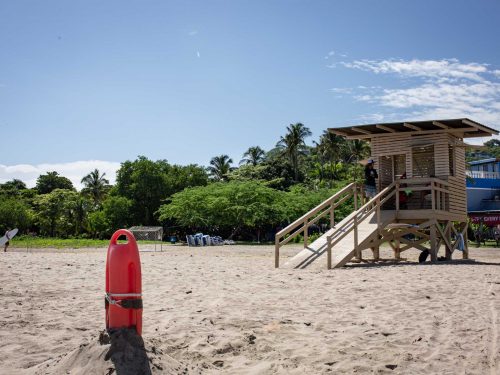


Comments